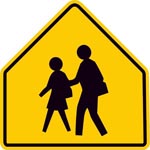Children, Youth, Families, and Schools, Nebraska Center for Research on
Document Type
Article
Date of this Version
2014
Citation
Published in chapter 9 of William P. Erchul and Susan M. Sheridan (Eds.), Handbook of Research in School Consultation, 2nd ed. (pp. 210–247). New York, NY: Routledge.
Abstract
Children’s developmental and educational outcomes are determined through a complex interplay of biological and eco-systemic variables. In order to best understand children’s educational success, aspects of home and school contexts have been examined, for they are the two most directly influential settings in a child’s life. Among ecological variables, key indicators of children’s academic success include family engagement and family-school partnerships (Christenson, 2004). When parents engage in supportive practices for their child’s learning, benefits for children, families, educators, classrooms, and schools are re-alized Oeynes, 2007). The relevance of families’ educational influence has been widely rec-ognized by educational institutions (e.g., Harvard Family Research Project; The Office of Head Start National Center on Parent, Family, and Community Engagement), and federal policies (No Child Left Behind Act of 2001, 2002; Individuals with Disabilities Education Act, 2004) enacted to expand the role of families in the education system and to enhance family-school partnerships. Evidence-based models that promote family engagement and family-school partner-ships are needed. Such models are especially warranted for children who are at risk for academic and school failure due to disadvantage or lack of access to educational resources. One such model that brings families and educators together via a collaborative problem-solving process and joint decision-making consultation framework is Conjoint Behavioral Consultation (CBC; Sheridan & Kratochwill, 2008). As an indirect method of service delivery, CBC facilitates partnerships and working relationships among the key individuals in a child’s life by establishing collaborative linkages between the home and school systems.
Included in
Child Psychology Commons, Counseling Psychology Commons, Developmental Psychology Commons, Family, Life Course, and Society Commons, Other Social and Behavioral Sciences Commons



Comments
Copyright © 2014 Taylor and Francis. Used by permission.